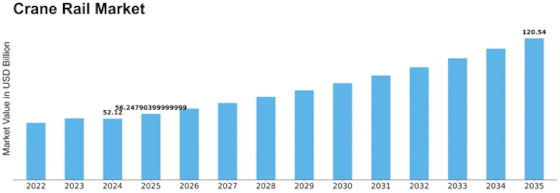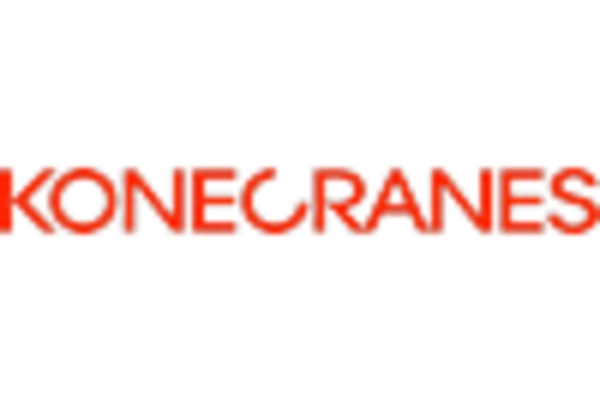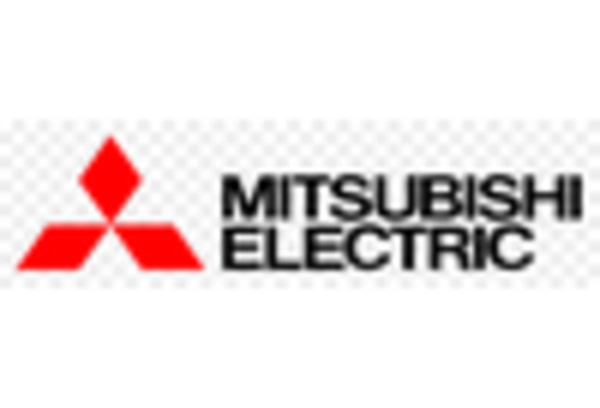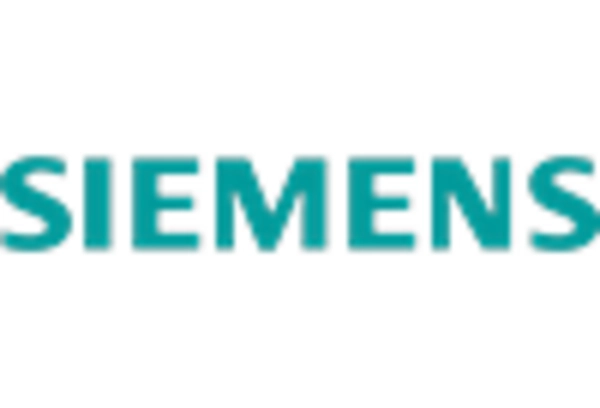Crane Rail Size
Crane Rail Market Growth Projections and Opportunities
The dynamics of the crane rail market are influenced by several market factors. One of its major drivers is the increasing demand for cranes in industries such as construction, manufacturing and logistics. This means that these companies must have effective material handling technologies like cranes as they grow. The need to lift and transport heavy items on building sites has led to a greater demand for crane rails, especially with the current growth in the construction industry.
Globally, infrastructure development programs play a vital role in boosting the growth of this market segment. Governments and commercial entities involved in infrastructure projects such as bridges, ports and airports require specialized crane systems for use during construction and maintenance. This rise in construction activities further drives up the demand for crane rails due to increased use of automation as well as sophisticated material handling equipment.
The crane rail business is significantly affected by global economic conditions. Economic growth accompanied by stability positively influences industrial activities leading to more investments into machinery and equipment including cranes. On the contrary, recessions may cause a decline in capital outlays by industrial companies reducing their desire for crane rails hence making it almost cyclic. Thus, purchasing decisions made by businesses requiring material handling solutions are directly impacted by economic cycles.
Additionally, technological advancements affect this industry due to innovations that lead to creation of better cranes which are more complicated. Adoption of smart technology like sensors, automation and data analytics enhances performance plus safety of cranes thereby making them attractive to modern firms looking for reliable material handling systems. In order to stay ahead of emerging trends technologically speaking so that they can offer cutting-edge solutions for their customers, manufacturers within crane rail market constantly invest into research &development efforts.
Environmental aspects have increasingly become large determinants within this sector with respect to sustainable materials used in constructing energy efficient environmentally friendly overhead traveling cranes (Crane Rail Systems). Industries have developed more energy-efficient along with eco-friendly Crane Rail Systems so as to align themselves with the trend of sustainable development. This is an important selling point for companies that want to sell cranes in a market that is increasingly environmentally friendly and also makes it possible for them to meet their goals.
Furthermore, regulatory issues influence the crane rail industry as governments across the globe place safety and pollution standards on manufacturers. Strict employee welfare and global environment statutes promote innovation in crane technology and manufacturing processes to ensure that crane rail systems conform to this criterion. In addition, adherence to standards not only ensures workplace safety but also enhances the competitiveness of producers’ reputations leading to more customer purchases.



















Leave a Comment